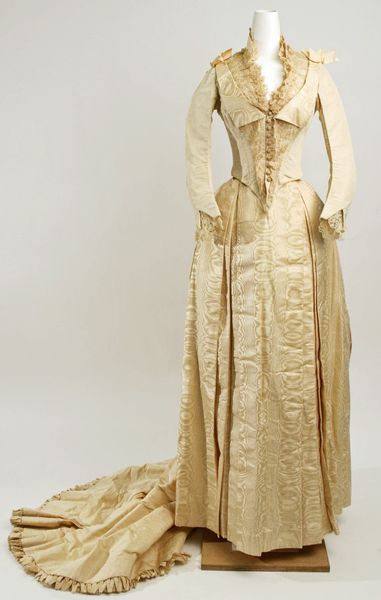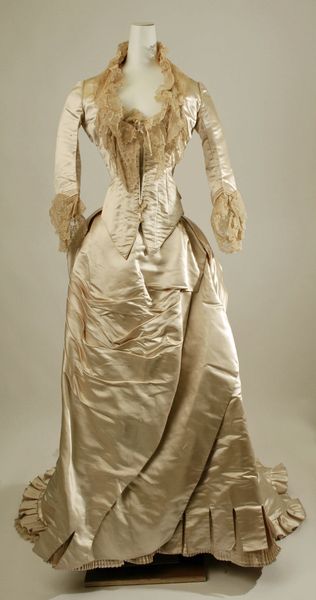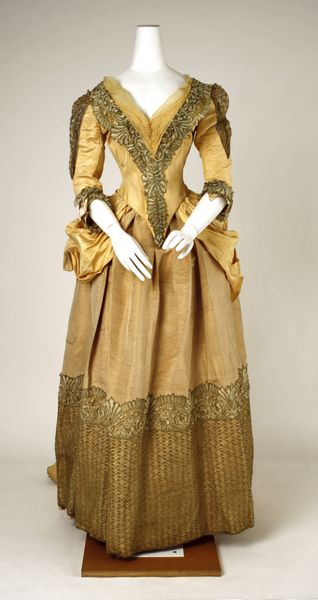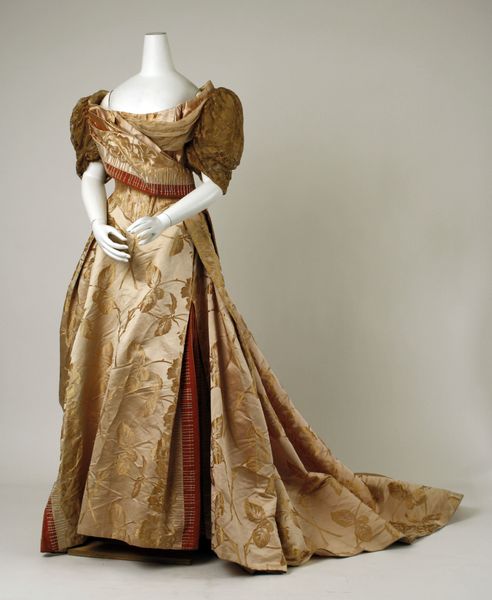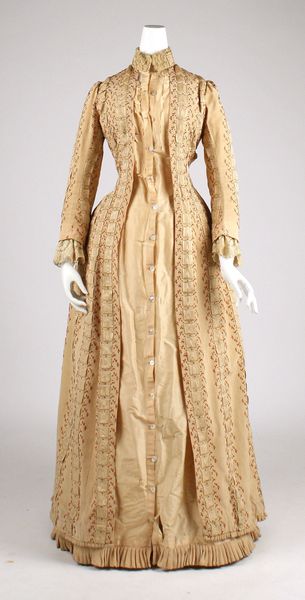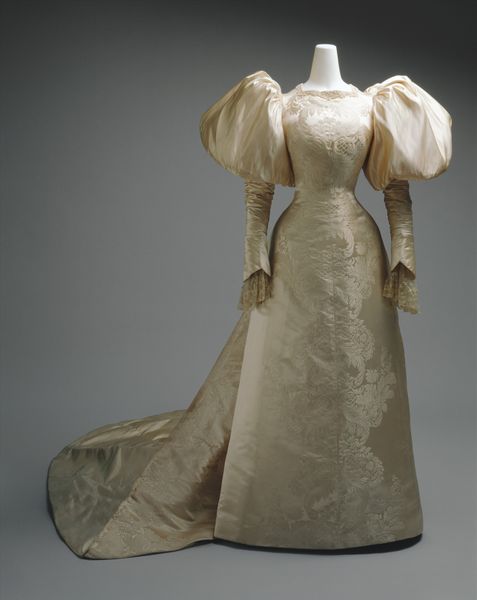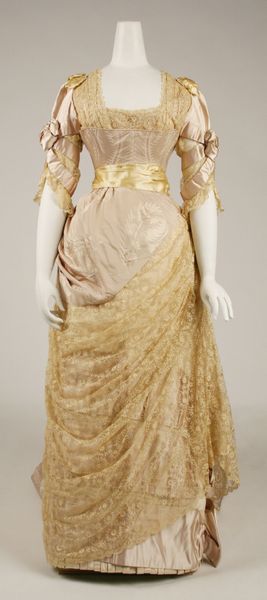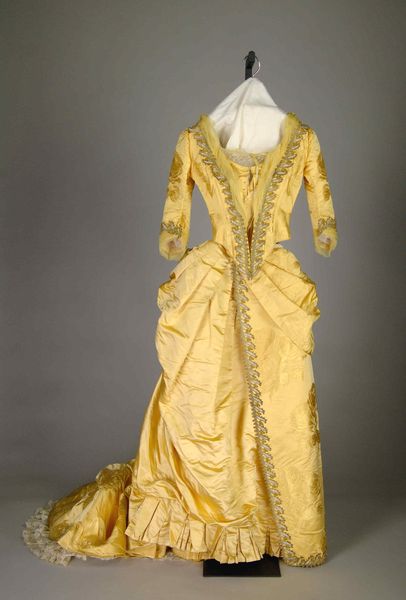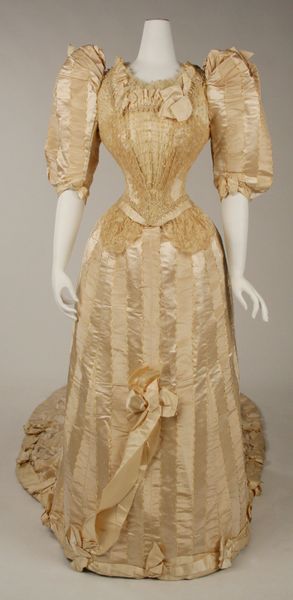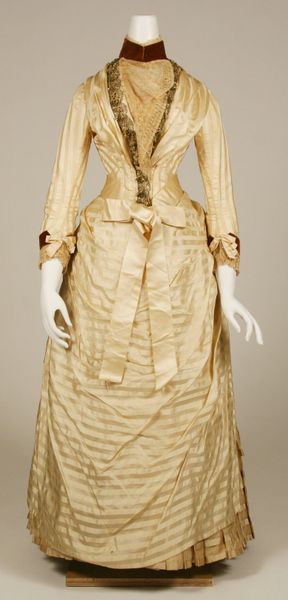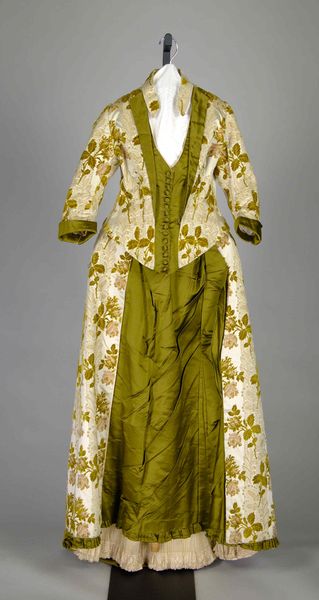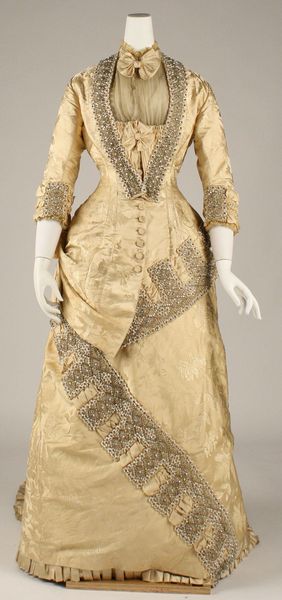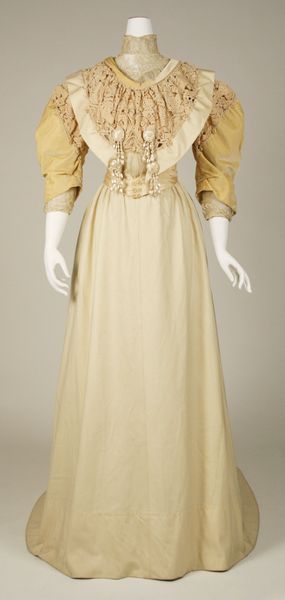
textile
#
fashion design
#
underwear fashion design
#
fashion mockup
#
textile
#
collage layering style
#
fashion and textile design
#
historical fashion
#
wearable design
#
clothing theme
#
costume
#
clothing design
#
bridal fashion
Copyright: Public Domain
Editor: Here we have a "Bridesmaid dress" from 1896, currently residing in the Metropolitan Museum of Art. It's made of textile. What immediately strikes me are the sleeves! They’re so voluminous. How can we interpret this garment within its social context? Curator: Absolutely. Forget the outdated focus on individual authorship and delve into the Victorian textile industry that made this dress possible. What can the precise choice of textile and trim tell us about the status and access to resources for the intended wearer? Editor: I see what you mean. It’s not just about a "dress" – it’s about the intricate labor that went into weaving, cutting, and constructing it. Are there details we might overlook that reveal insights into Victorian-era production or consumption? Curator: Exactly! Look at the inner lining, stitching, and finishing techniques. What do these details, readily visible to the seamstress, or even the wearer, imply about divisions of labor or standards of dress for various occasions? This helps us move past seeing the dress as a static object. Editor: So, thinking materially, how would access to, say, particular dyes have influenced not just the aesthetic of the dress, but also the wearer's position in society? Were some materials indicative of elevated economic standing, regardless of form? Curator: Precisely. Materiality inherently reflects economic power, but also geographic location, global trade routes, and technological developments in manufacturing. The very "thingness" of the dress – its fiber content, its construction – screams social and economic stories far beyond aesthetics. Editor: I see! The construction techniques point to particular labor practices. Knowing this, do you think it changes how we perceive the object's artistry? Curator: The 'artistry' isn't solely in the final form, but interwoven with the labour conditions, the economic networks, and the accessibility of resources tied to its creation. Recognizing these production factors enriches our understanding far more than surface aesthetics could achieve alone. Editor: Fascinating. This reframes the dress as more of a cultural artifact deeply entrenched in social hierarchies and production methods rather than a piece of art in a vacuum. Curator: Indeed. I am forever enriched when seeing things under a critical light that considers its social and historical impact in how material and consumption relate.
Comments
No comments
Be the first to comment and join the conversation on the ultimate creative platform.

